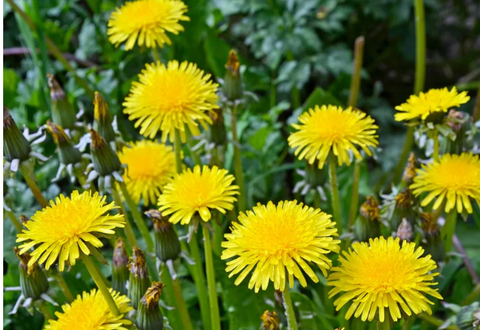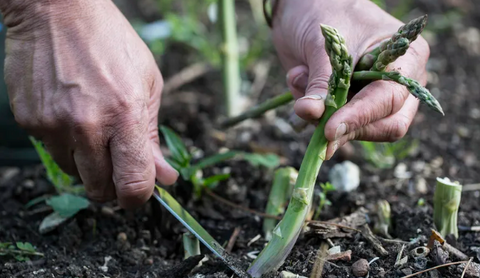Introduction
Gardening is not just a hobby; it's a passion that requires dedication, patience, and the right set of tools. Whether you're a seasoned gardener or just starting out, having the right tools can make all the difference in transforming your garden into a thriving oasis of beauty and productivity. In this article, we'll explore the essential tools every gardener needs to dig, plant, and grow with success.The following content also has some reference value for raised garden beds.
Essential Hand Tools
Trowel and Hand Fork
- The trowel is a versatile tool used for digging small holes, transplanting seedlings, and scooping soil. Its compact size and sturdy blade make it ideal for precision work in tight spaces. The hand fork, with its sharp, pointed tines, is perfect for loosening soil, removing weeds, and aerating the ground around plants.
Pruning Shears
- Pruning shears, also known as secateurs, are essential for maintaining the health and appearance of your plants. They're designed to make clean, precise cuts on stems, branches, and foliage, promoting healthy growth and reducing the risk of disease. Look for shears with sharp, high-quality blades and ergonomic handles for comfortable use.
Hand Cultivator
- A hand cultivator is a must-have tool for breaking up compacted soil, removing weeds, and mixing in amendments. Its sturdy tines make quick work of loosening soil and breaking up clumps, while its compact size allows for easy maneuverability in tight spaces.
Digging Tools
Shovel
- The shovel is a fundamental tool for any gardener, used for digging planting holes, moving soil, and lifting heavy materials. Look for a shovel with a sturdy, ergonomic handle and a durable blade designed for digging through various types of soil.
Spade
- Similar to a shovel but with a flat, squared-off blade, the spade is ideal for edging, cutting through sod, and digging in tight spaces. Its sharp edge makes it easy to create clean, straight lines and precise cuts, making it indispensable for many gardening tasks.
Garden Fork
- The garden fork is designed for turning and aerating soil, lifting and dividing plants, and loosening compacted earth. Its sturdy, pointed tines penetrate deep into the soil, allowing for better air and water circulation and promoting healthy root growth.

Cutting and Trimming Tools
Hedge Shears
- Hedge shears are essential for shaping and trimming hedges, shrubs, and topiaries, creating clean, uniform lines, and maintaining a neat, tidy appearance. Look for shears with sharp, serrated blades and ergonomic handles for comfortable, precise cutting.
Loppers
- Loppers are larger, long-handled cutting tools designed for pruning thicker branches and stems that are too big for pruning shears. Their longer handles provide increased leverage, allowing for easier cutting of thicker wood, while their sharp, bypass or anvil-style blades make clean, precise cuts.
Pruning Saw
- Pruning saws are indispensable for cutting through thicker branches and woody stems that are too large for loppers or pruning shears. Their sharp, serrated blades make quick work of tough wood, while their compact size and ergonomic handles provide comfortable, controlled cutting.
Watering Tools
Garden Hose
- A garden hose is a staple tool for watering plants, washing surfaces, and providing essential hydration to your garden. Look for a durable, kink-resistant hose with adjustable spray settings and a convenient length for reaching all areas of your garden.
Watering Can
- Watering cans are essential for watering plants in pots, containers, and hanging baskets, providing a gentle, controlled flow of water to delicate seedlings and young plants. Look for a watering can with a comfortable handle and a detachable rose for versatile watering options.
Sprinkler System
- Sprinkler systems are ideal for watering larger areas of the garden, providing even coverage and efficient water distribution. Choose a sprinkler system with adjustable spray patterns and coverage options to suit the size and layout of your garden.

Soil Preparation Tools
Garden Hoe
- The garden hoe is a versatile tool for cultivating, weeding, and loosening soil, making it easier to plant and maintain your garden. Look for a hoe with a sharp, angled blade and a comfortable handle for easy maneuverability and efficient soil work.
Garden Rake
- The garden rake is essential for leveling soil, removing debris, and smoothing out seedbeds, creating a clean, even surface for planting. Look for a rake with sturdy tines and a durable handle for long-lasting performance in the garden.
Soil Knife
- The soil knife, also known as a hori hori knife, is a multi-purpose tool for digging, cutting, and weeding in the garden. Its serrated edge makes quick work of tough roots and soil, while its sharp, pointed tip is perfect for transplanting seedlings and bulbs.
Planting Tools
Bulb Planter
- Bulb planters are specialized tools designed for planting bulbs, tubers, and small seedlings with precision and ease. Their hollow, cylindrical blades create uniform holes in the soil, making it easy to plant bulbs at the correct depth for optimal growth.
Dibble
- A dibble, or dibber, is a simple yet effective tool for creating planting holes in the soil for seeds, seedlings, and transplants. Its pointed tip makes it easy to pierce the soil, while its sturdy handle provides leverage for digging holes of various depths.
Seedling Transplanter
- Seedling transplanters are specialized tools designed for gently removing and transplanting seedlings from seed trays to the garden. Their narrow, pointed blades slide easily under delicate seedlings, minimizing root disturbance and transplant shock.
Weeding Tools
Hand Weeder
- Hand weeders are small, handheld tools designed for removing weeds and grasses from the garden with precision and ease. Their narrow, forked blades penetrate deep into the soil, allowing for precise weed removal without disturbing nearby plants. Look for hand weeders with ergonomic handles and durable, rust-resistant blades for comfortable and effective weeding.
Long-Handled Weeder
- Long-handled weeders, also known as stand-up weeders or weed pullers, are designed to remove weeds from the garden while standing upright, reducing strain on the back and knees. These tools typically feature a long handle with a gripping mechanism that grabs hold of weeds at the root, allowing you to easily pull them out of the ground with minimal effort.
Hori Hori Knife
- The hori hori knife is a traditional Japanese gardening tool that combines the functions of a knife and a trowel. Its sharp, serrated blade is ideal for cutting through tough roots and soil, while its pointed tip can be used for digging, planting, and transplanting. Hori hori knives often feature measurement markings on the blade, making it easy to gauge planting depths and spacing.
Cultivating Tools
Garden Fork
- Garden forks, also known as digging forks or spading forks, are essential tools for turning and aerating soil, lifting and dividing plants, and breaking up compacted earth. Their sturdy, pointed tines penetrate deep into the soil, allowing for better air and water circulation and promoting healthy root growth.
Hand Cultivator
- Hand cultivators, also known as hand rakes or hand hoes, are versatile tools for cultivating, weeding, and loosening soil in small spaces. Their sturdy tines or blades make quick work of breaking up clumps and removing weeds, while their compact size allows for easy maneuverability around plants and tight spaces.
Tiller
- Tillers, also known as rototillers or cultivators, are power tools used for breaking up and tilling soil in larger garden areas. They feature rotating blades or tines that dig into the soil, breaking up compacted earth and preparing the ground for planting. Tillers come in various sizes and configurations, from handheld models for small gardens to larger, tractor-mounted units for larger plots of land.
Pruning Tools
Hand Pruners
- Hand pruners, also known as secateurs or pruning shears, are essential tools for maintaining the health and appearance of your plants. They're designed to make clean, precise cuts on stems, branches, and foliage, promoting healthy growth and reducing the risk of disease. Look for pruners with sharp, high-quality blades and ergonomic handles for comfortable use.
Pruning Shears
- Pruning shears, similar to hand pruners but with longer handles, are ideal for reaching and trimming branches and stems that are out of reach. They provide increased leverage and cutting power, making them suitable for cutting thicker wood and branches. Pruning shears are available in bypass, anvil, or ratchet styles, each suited for different pruning tasks.
Loppers
- Loppers are larger, long-handled cutting tools designed for pruning thicker branches and stems that are too big for pruning shears. Their longer handles provide increased leverage, allowing for easier cutting of thicker wood, while their sharp, bypass or anvil-style blades make clean, precise cuts.

Tool Maintenance and Care
Cleaning and Sharpening Tools Regularly
- Proper maintenance of your gardening tools is essential for ensuring their longevity and performance. Clean dirt and debris from tools after each use to prevent rust and corrosion, and sharpen blades regularly to maintain their cutting edge.
Proper Storage to Prevent Rust and Damage
- Store your gardening tools in a dry, well-ventilated area to prevent rust and damage. Hang tools on hooks or racks, or store them in a tool shed or garage to protect them from the elements and prolong their lifespan.
Replacing Worn-Out or Damaged Tools
- Regularly inspect your gardening tools for signs of wear and damage, such as bent or broken handles, dull blades, or rusted metal. Replace worn-out or damaged tools promptly to ensure safe and effective gardening practices.
Investing in Quality Tools
Benefits of Investing in High-Quality Gardening Tools
- Investing in high-quality gardening tools is essential for achieving professional results in your garden. Quality tools are more durable, reliable, and efficient than their cheaper counterparts, saving you time and effort in the long run.
Long-Term Cost Savings and Durability
- While high-quality gardening tools may have a higher upfront cost, they offer long-term cost savings and durability. Quality tools are built to last, reducing the need for frequent replacements and repairs, and ensuring years of reliable performance in the garden.
Choosing the Right Tools for Your Gardening Needs
- When investing in gardening tools, consider your specific gardening needs, preferences, and budget. Choose tools that are well-suited to the tasks you'll be performing, whether it's planting, pruning, weeding, or cultivating, and opt for brands known for their quality and reliability.
Conclusion
In conclusion, having a complete tool set is essential for transforming your garden into a thriving oasis of beauty and productivity. From essential hand tools and digging implements to cutting and pruning instruments, watering devices, and maintenance equipment, each tool plays a crucial role in helping you dig, plant, and grow with success. By investing in high-quality tools, practicing proper maintenance and care, and choosing the right tools for your gardening needs, you can enjoy a bountiful and beautiful garden for years to come. Happy gardening!









